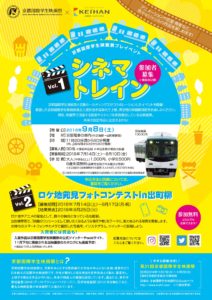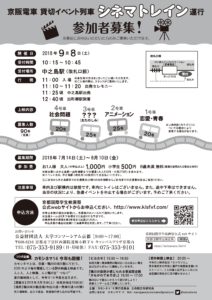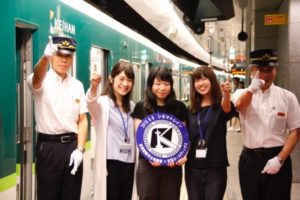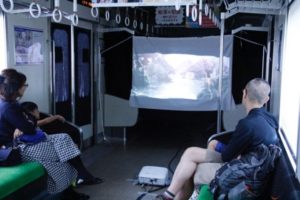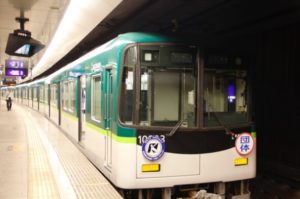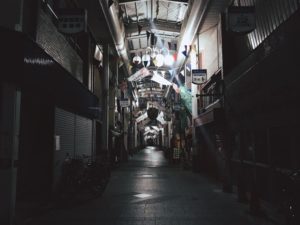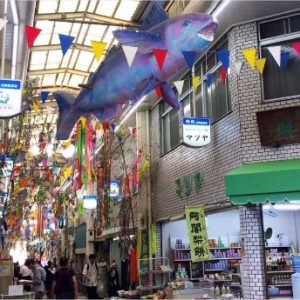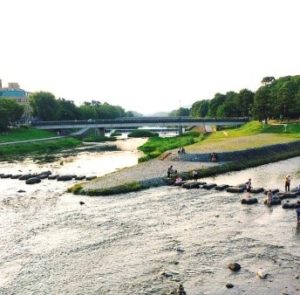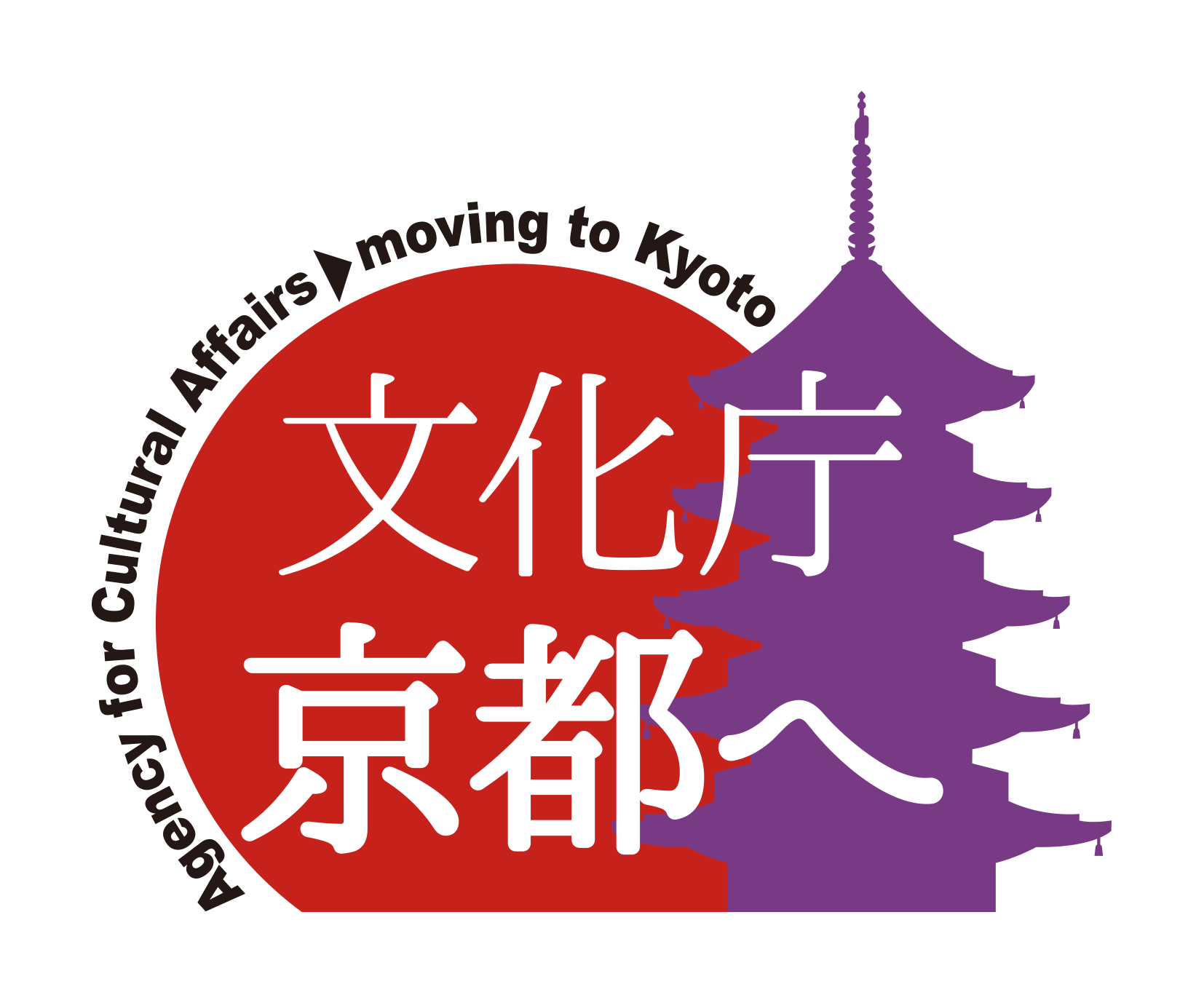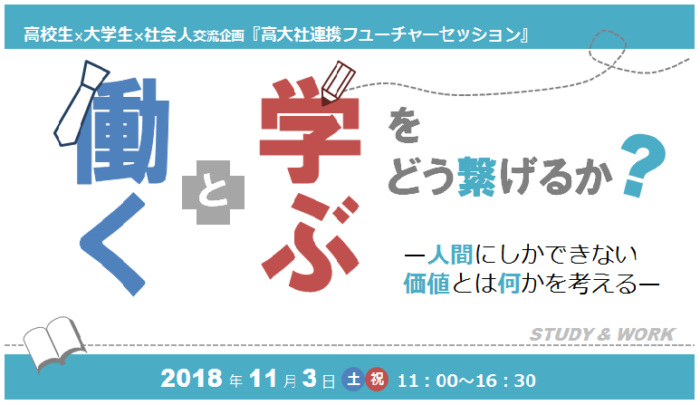
For Mr./Ms., are “working” and “learning” completely different? Without a clear vision of your future vision and purpose, you may be choosing a career path such as getting a job at a well-known company, and for that reason, applying to a famous university with a higher deviation value.
In this Future Session, we would like to invite people who have thought about their own future and carved out their own path as role models, and we would like to think together across generations under the theme of “How to connect work and learning?”
We hope that by coming into contact with diverse values, you will broaden your horizons and make use of them in your future studies and career choices.
In addition, in anticipation of future technological innovation, we will hold a meeting in Kyoto City and the northern part of the prefecture on the same day, and share role model talks and summary time online.
| Date & Time |
Saturday, November 3, 2018 11:00~16:30 (Doors open at 10:30) |
| Place: |
Kyoto Prefectural Venue:
Fukuchiyama City Citizen Exchange Plaza Fukuchiyama 3rd Floor Citizen Exchange Space
(400 Ekimae-cho, Fukuchiyama-shi, Kyoto)
Venues in Kyoto:
Campus Plaza Kyoto 5th Floor Seminar Room 2~4
(Shimogyo-ku, Kyoto, Nishitoin-dori, Shiokoji, Shimoru) |
| Occupancy |
Venue: 25 university students, 25 high school students (university students and high school students attending universities and high schools in Kyoto Prefecture) |
| program |
11:00~ Explanation of purpose and icebreaker
11:45~ Lunch (Please prepare your own lunch)
12:45~ Role Model Talk
Northern Kyoto Prefecture Venue: Rika Yajima (Representative Director of Waeru Co., Ltd.)
Kyoto City Venue: Ryo Tsukamoto (CEO, GL Academia Co., Ltd.)
14:15~ Questions for Workshop Role Models
15:45~ Reflection and Summary
16:30 End |
*Speakers*
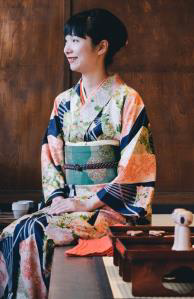 |
Rika Yajima (Representative Director, Waeru Co., Ltd.)
Born in Tokyo in 1988.
Graduated from Keio University Faculty of Law and Keio University Graduate School of Media and Governance.
Fascinated by artisans and tradition, he began traveling around the country at the age of 19, and began working to disseminate information on Japan’s traditional culture and industry during his university years. With the desire to “pass on the traditions of Japan to the next generation,” he founded Waeru Co., Ltd. in March 2011, when he was in his fourth year of university. In March 2012, in order to create an environment where people can come into contact with the handiwork of craftsmen from an early age, he launched “AERU”, a traditional brand for 0 to 6 year olds, and created original products together with craftsmen from all over Japan. Starting with an online directly managed store, in 2014 he opened a directly managed store “AERU MEGURO” in Tokyo, and in 2015 he opened a directly managed store in Kyoto “AERU GOJO”. We are developing various businesses such as “aeru room” and “aeru oatsurae” to connect to the next generation while utilizing the traditions of Japan and the wisdom of our ancestors in our daily lives. |
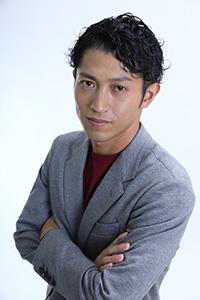 |
Ryo Tsukamoto (CEO, GL Academia Co., Ltd.)
CEO of GL Academia Corporation. Education professional, interpreter and translator.
He holds a Master’s degree in Psychology from the University of Cambridge.
Graduated from the Faculty of Economics at Doshisha University from a problem child with a deviation value of 30 and on the verge of dropping out. After that, he studied psychology at Cambridge, and after returning to Japan, he established an English conversation school, GL Academia, in Kyoto. His teaching methods, which make use of his knowledge of psychology and his own learning experience, have attracted attention, and he has been inundated with requests for guidance from Japan and abroad. More than 100 Japan students, from working adults, have been admitted to top universities and graduate schools overseas, including the University of Cambridge and the University of London.
He is the author of 11 books, including “Life-Changing Studies for Cambridge Graduates Even with a Deviation of 30,” “The Habits of ‘People Who Do It Quickly’ and ‘Those Who Can’t’,” and “Efforts Continue on Their Own.” |
【Coordinator】
Northern Kyoto Prefecture: Mr. Hideki Sugioka (Associate Professor, Faculty of Regional Management, Fukuchiyama Public University)
Kyoto City Venue: Terumi Sameshima (Lecturer, Department of Nursing, Faculty of Health Sciences, Kyoto Koka Women’s University)
High School and University Collaboration Future Session Application Form***

How to apply: Please apply by one of the following methods.
Send the application form by fax (1)
(2) Send by e-mail
(1) Application by fax
Please fill out the application form and send it by fax to the University Consortium Kyoto Secretariat.
Please download the application form.
Fax: 075-353-9101
(2) Application by e-mail
Subject: “Application for Future Session in Collaboration with High School and University”
Please fill out the application form and send it to the address below.
Please send the following content directly to the body of the email:
(1) Name (furigana), (2) University/high school, (3) Grade, (4) Telephone number, (5) E-mail address
(6) Desired venue (northern Kyoto / Kyoto city)
Please apply by e-mail to kodai■consortium.or.jp with the above contents.
(Please replace ■ with @)
We will send you a confirmation email after receiving your application.
Application Deadline
Friday, October 19, 2018
Application and Inquiries
University Consortium Kyoto, Educational Development Division
Tel: 075-353-9153 FAX: 075-353-9101
〒600-8216 Shimogyo-ku, Kyoto-shi, Nishitoin-dori, Shiokoji, Shimo-ku, Kyoto, Campus Plaza Kyoto
* Reception hours: Tuesday ~ Saturday 9:00 ~ 17:00 (excluding year-end and New Year holidays)
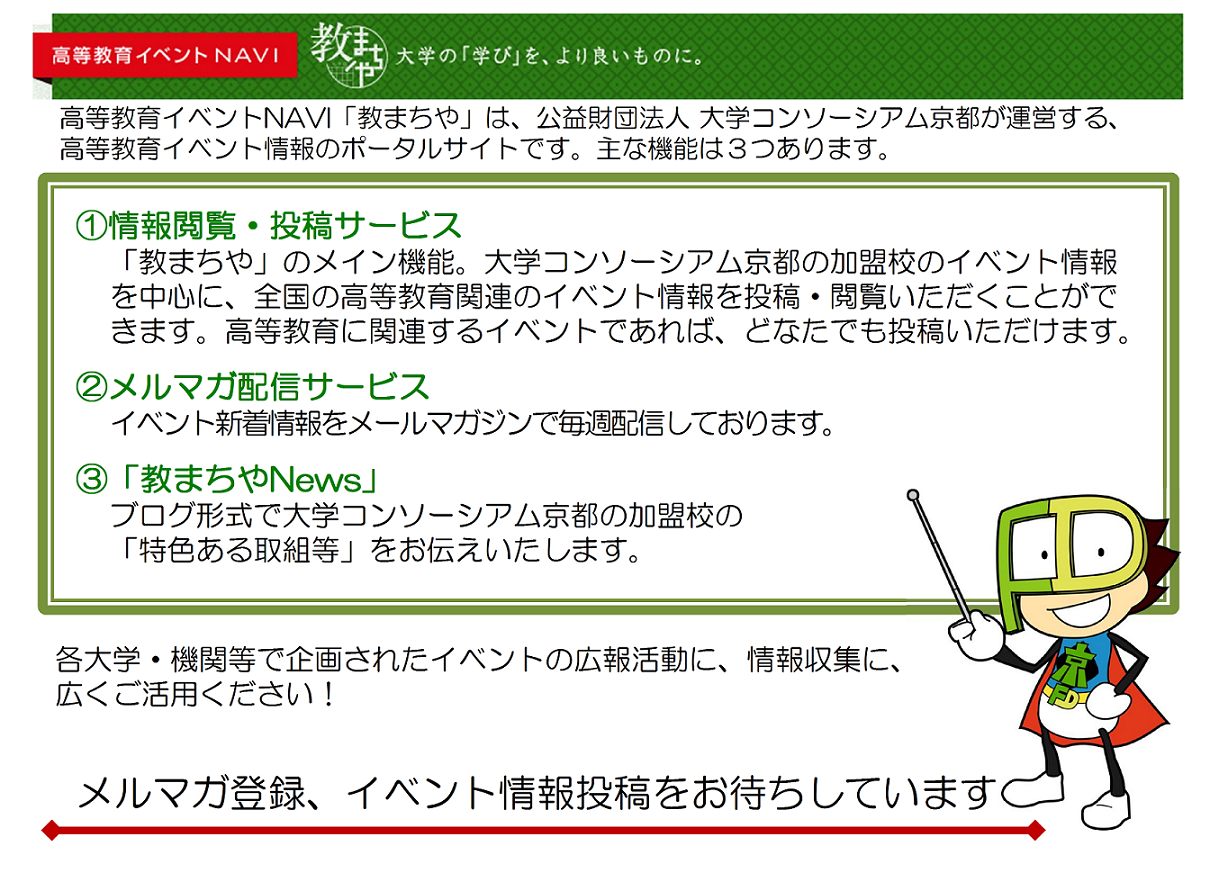
![]()














